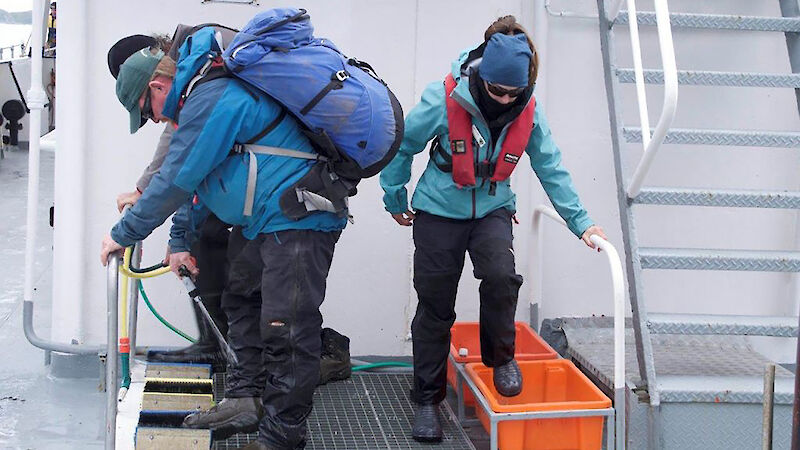All expeditioners must adhere to the following guidelines.
Going to Antarctica or the sub-Antarctic
- Ensure all clothing, footwear and personal effects are free of Biosecurity Risk Material (BRM).
- Ensure all work equipment, including backpacks, tents and equipment bags are clean and free of BRM. This includes new items in original packaging.
- Once clean, items must be packed in clean/new cardboard boxes or clean/new plastic bins. These boxes or bins must have all openings sealed.
- Remove excess packaging such as paper, plastic and cardboard where possible.
- Polystyrene beads, chips or similar packaging are prohibited in Antarctica.
In Antarctica or the sub-Antarctic
- Ensure clothing, personal effects, packs, tents and equipment bags are cleaned between locations (such as different wildlife colonies or ice-free areas).
- Ensure terrestrial and freshwater scientific sampling field equipment (such as lake nets) are sterilised, between sampling locations. Otherwise, use duplicate sets of equipment.
- If you are unsure about when, where or how you should clean clothing and equipment, check with the Station Environmental Officer or email the Environmental Management unit at AADEnvironment@aad.gov.au.

